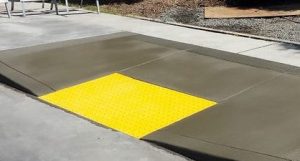About Document Accessibility
About Accessibility
- A sidewalk ramp
- A pair of eyeglasses
- Video with subtitles
If you’ve used a sidewalk ramp, eyeglasses, or video subtitles, you’ve used assistive technology which aids with accessibility.
Accessibility, when it comes to digital content, is often compared to a sidewalk ramp or curb cut — it’s a feature that ends up benefitting all people, not just those with mobility issues. As document authors, you need to be aware of the different types of abilities to plan for when creating accessible documents.
Here’s a breakdown of the different barriers and how we can be inclusive:
- Visual
- People with low or no vision.
- Help them by structuring documents correctly.
- Auditory
- People with low or no hearing.
- Help them by adding captions and subtitles to your audio or video.
- Mobility
- People with physical mobility impairments (or people using mobile devices).
- Help them by making documents easy to navigate and scale.
- Cognitive or Neurodivergent
- People with situational or developmental disabilities.
- Help them by ensuring content is written in plain language. [1]
Your primary task when making accessible documents is to ensure documents are structured correctly so that people assistive technologies can interact with your digital content. In order to do this, follow the techniques detailed in this resource.
The steps taken to ensure the accessibility of the documents that you create are often not laborious. In the end, it often makes the document easier for all to use.
- To learn more, see Diverse Abilities and Barriers from W3C Web Accessibility Initiative. ↵




